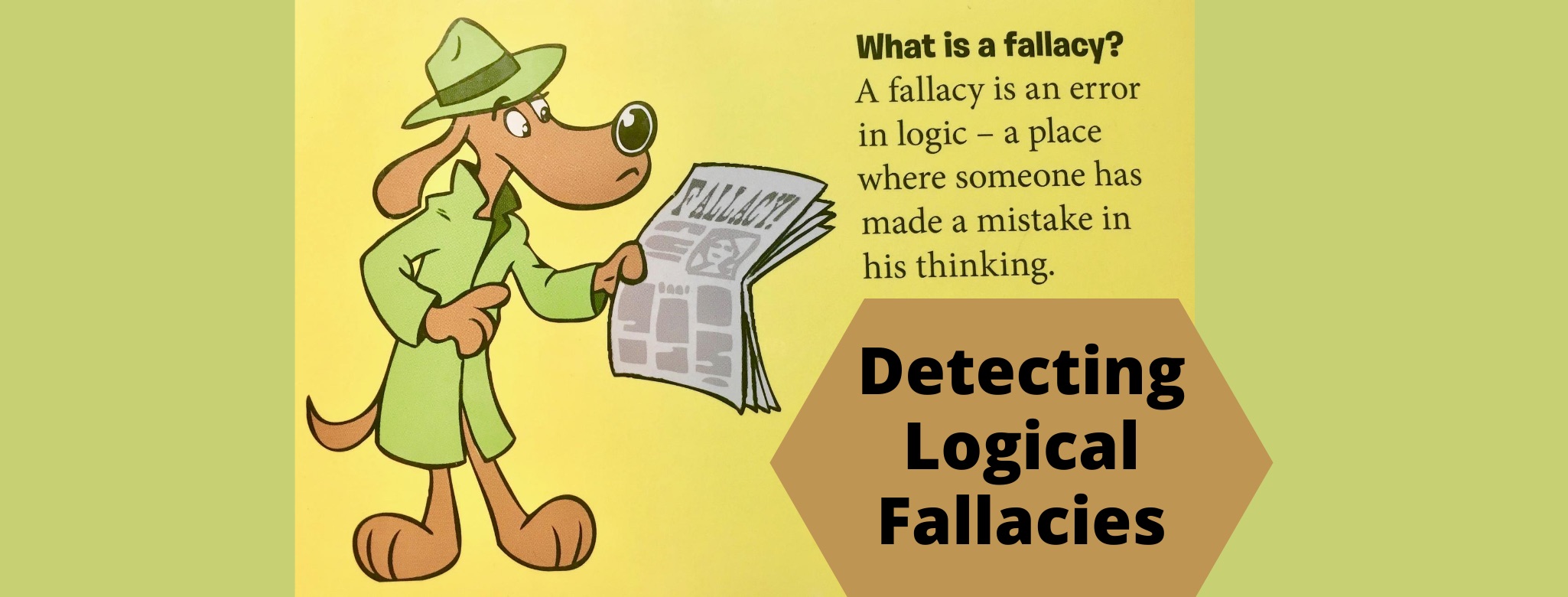
Learn 15 different logical fallacies -- and develop the skills, tools, and habits of stepping back, analyzing a situation, and thinking logically and clearly. A must for all students!

How to get the most out of Detecting Logical Fallacies, Part One with Tammy Parker:
- BEFORE the course begins...
- review the course structure;
- obtain the needed materials
- ensure you have a Quizlet account; and
- download and print the syllabus.
- Plan out when you will study each week for this class, and:
- Have a notebook (w/pen or pencil) ready and available to take class notes.
- Watch Recording or Attend Live Class
- Read chapters and do practice Qs.
- Complete ALL tasks, assignments, quizzes, &/or tests assigned each week.
------------------------------------------------------------------------
- Students will work on about two chapters per week.
- Parents should note that the answer key in the back of this book IS for the students to use (to check themselves as practice for their weekly work).
- Besides the practice questions in the book and Quizlet assignments each week, there are four quizzes, a midterm test, and a final exam on Moodle.
------------
Special Notes: This is Part One of a 2-part course.
Total Classes: 12
Duration: 45 minutes
Prerequisite: None
Suggested Grade Level: 7th to 9th grade, mature 6th grade (possible 10th grade)
Suggested Credit: One full semester Formal Logic
Instructor: Tammy Parker
Course Description: Middle school is a great time to introduce formal logic! Your student's brain has reached a point of neurological development where he or she is ready to grapple and consider material in a logical manner. This course combines the concrete with the abstract with a method that will lead your student to develop a habit of stepping back, analyzing a situation, and thinking logically. By skillfully and methodically completing Detecting Logical Fallacies, Part One, your student will know the concepts surrounding 15 different fallacies -- and gain the ability to decipher, analyze, and contend with logical fallacies. Following this course, continue exploring the topic; sign up for Detecting Logical Fallacies, Part Two.
Course Outline:
-
Class 1: Introduction & Chapter 1
-
Class 2: Chapters 2 & 3
-
Class 3: Chapters 4 & 5
-
Class 4: Chapters 6 & 7
-
Class 5: Chapters 8 & 9
-
Class 6: Chapter 10 & Prep for Mid-Term
-
Class 7: Chapters 11 & 12
-
Class 8: Chapters 13 & 14
-
Class 9: Chapters 15 & 16
-
Class 10: Chapters 17 & 18
-
Class 11: Chapters 19 & 20
-
Class 12: Chapter 21 & Prep for Final Exam
Course Materials:
The Fallacy Detective (2009) ISBN-13: 978-0974531533
-
Utilizing a used copy of this edition is fine and often more affordable (see BookFinder.com).
-
Detecting Logical Fallacies, Part One covers the first three parts of this book; Detecting Logical Fallacies, Part Two will briefly review the first three parts and then cover the last two parts.
- Quizlet; Students in this teacher-created Quizlet class have unlimited, free access to Test and Learn modes for the sets in those classes. A student must “join” this class on Quizlet for this feature to work correctly.
Homework:
-
Students will work on about two chapters per week.
-
Parents should note that the answer key in the back of this book is for the student’s use to check themselves as practice for their weekly work and to prepare for the class discussions.
-
Besides the practice questions in each chapter, there are four computer quizzes, a midterm test, and a final exam.
- Teacher: Tammy Parker